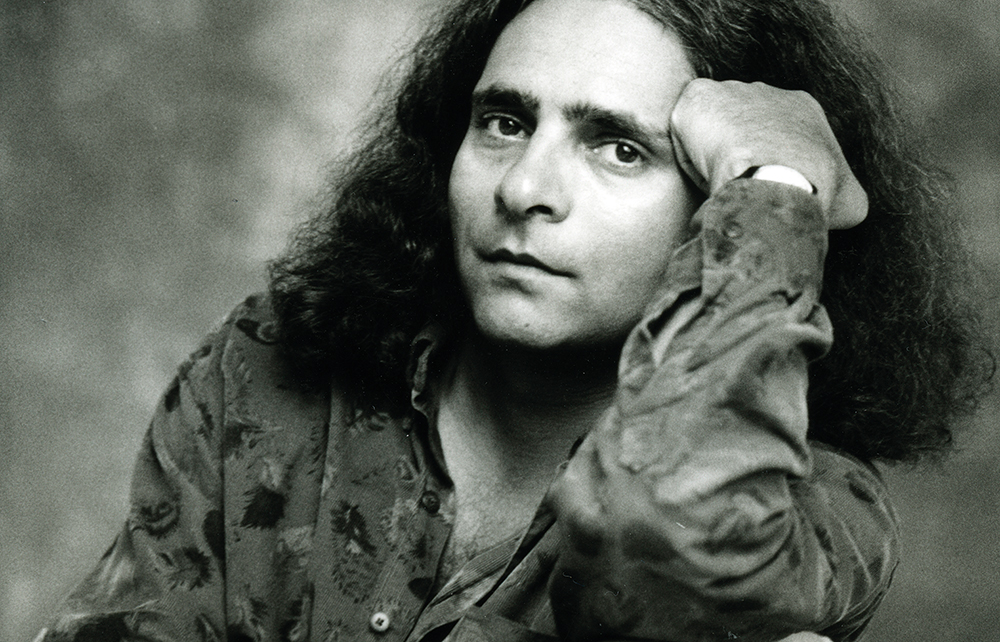If any novelist, playwright or screenwriter of the past 40 years could be called ‘a writer of consequence’, to use the literary agent Andrew Wylie’s term, it would be Hanif Kureishi. While not shifting units on the scale of his near contemporaries Ian McEwan, Martin Amis and Salman Rushdie, Kureishi’s cultural influence – through his explorations of race, class and sexuality in novels such as The Buddha of Suburbia and films like My Beautiful Laundrette – is inestimable. In this first major biography, Ruvani Ranasinha tracks Kureishi’s progress from his birth in Bromley in 1954 to a Pakistani father and English mother, through his glittering, always provocative career, to the recent accident which rendered him unable to walk or use his hands. It’s a long and challenging read, yet one that fizzes with insight into the tumultuous times in which Kureishi produced his best writing.
Ranasinha’s major coup is her seemingly unrestricted access to Kureishi’s diaries, which allows an extraordinary intimacy with her subject, bringing him into ever sharper focus as the book progresses. From the start, Kureishi fantasises about escaping the violent racism of his youth through writing: ‘I dreamed of being on TV and being called a writer.’ And not just any old writer: ‘I want to win the Nobel Prize,’ he admits, though Ranasinha illustrates how his cast-iron self-belief is undermined by a lifelong inferiority complex bequeathed by the suburban upbringing in which his father mentored him as a creative artist. When he finally finds his subject, his diary records drolly: ‘The Asian community has been for me what dishwashing was for Orwell.’
It is Kureishi’s search for this compelling subject, and a satisfactory form with which to express it, that takes up the first half of the book. Beginning with Borderline, his play for the Royal Court, Ranasinha comments: ‘Kureishi’s plays helped revitalise British drama with new vocabularies and visions of identity in an increasingly cross-ethnic, transnational world.’ This was followed by the remarkable success of his first film, My Beautiful Laundrette, a catalyst for Asian writers, filmmakers, journalists and actors who saw themselves portrayed for the first time as funny, feisty and successful rather than as caricatured victims in It Ain’t Half Hot Mum. When Kureishi distilled his experience as a dramatic writer into fiction, the result was his spectacular first novel, the enduringly fresh and funny The Buddha of Suburbia. Here the diaries reveal him as canny in repositioning himself as a literary writer, wanting to create fiction that aspired to match the best pop music – ‘thrilling to youth but also accessible to mum’. In Buddha, he succeeded in dramatising the ‘combustible intersection of the absorbing, colliding social worlds its mixed-race narrator straddles’.
On Kureishi’s subsequent fiction (from The Black Album to the short story collections and the controversial roman-à-clef Intimacy), Ranasinha is adroit at teasing out layers of cultural nuance, as well as parallels between the life and the work. She repeatedly makes connections between the films and novels, particularly the trope of the politically committed woman caught in a relationship with two men. She also adumbrates how Kureishi’s familiar list of influences (Baldwin, Genet, Proust, Roth, Bowie) has shaped his work.
Asian writers and actors saw themselves portrayed as funny and feisty rather than as caricatured victims
At the same time, the book steers clear of hagiography. An excellent interpreter of the best novels and films, Ranasinha nevertheless judges other works as weak when appropriate. And she’s not afraid to expose Kureishi’s literary vanity, writing that his youthful ‘flattering self-comparisons with the great authors he worshipped persisted into midlife’, while commenting astutely on his private life: ‘His remarkable readiness to own up to his faults is at once inextricably allied to an evasion of personal responsibility.’
Ranasinha also explores how prescient Kureishi was in tracking the rise of Islamist fundamentalism in his film My Son, the Fanatic. He ‘immediately grasped the global implications of the Rushdie affair… Very early on he feared that the fatwa and its aftershock could derail the confidence of multicultural Britain.’ Kureishi observed: ‘The major conflicts… over the next 20 years or so are not going to be between capitalism and communism, but between liberalism and Islam.’
Ultimately, it’s the close reading of the diaries that provides the most illumination, with Ranasinha weaving extracts into an exegesis of the plays, films, essays and stories, while tracking Kureishi’s picaresque progress through the labyrinth of literary London in the 1980s and 1990s to fatherhood and his emergence as a mentor to an entire generation. ‘Not only had he played a pivotal role in inspiring second- and third-generation British Asians to becomes artists, but his early films had also helped create an identifiably British- Asian cultural presence.’
This is a magnificent, meticulous and exhaustive biography, and one worthy of its mercurial subject. Its depictions of a young, gifted author tearing up the literary landscape of the late 20th century are almost unbearably poignant when set alongside Kureishi’s recent Substack dispatches from his hospital bed, in which he describes himself as ‘a broken man with a smashed body’. Ranasinha’s postscript, detailing the accident, at least gives hope for his physical rehabilitation and looks forward to Kureishi’s forthcoming memoir, Shattered, which he is dictating to his sons. Some writers just refuse to be silenced.






Comments